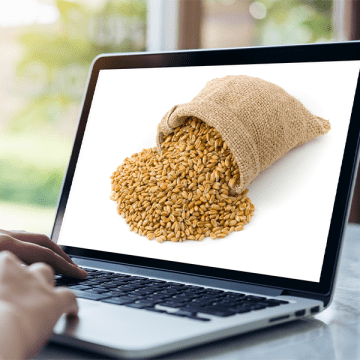Ammonia is the main waste product excreted by the nitrogen metabolism of fish. This metabolic phenomenon is specific to fish; it allows them to draw a maximum amount of energy from feed protein degradation. However, the usefulness of this specific metabolism is limited by the high toxicity of ammonia. When present at high concentrations in water, ammonia can impair fish performance. This constitutes a major risk for high-density fish farms. How can the impact of ammonia on fish performance be reduced?
Waste products of nitrogen metabolism in fish
Fish are ammoniotelic animals; that is to say, they excrete nitrogen wastes in the form of ammonia. In this respect, fish are different from terrestrial vertebrates as these excrete nitrogen in the form of urea or uric acid.
Unlike other production animals, fish have a strong ability to use amino acid degradation for energy production. Indeed the process of amino acid oxidation – also referred to as catabolism - enables them to draw energy that is later used by their body functions.
Excreting nitrogen through the gills in the form of ammonia is a highly energy-efficient way of dealing with this waste product.

However, in fish farms, where fish populations are much more highly concentrated, ammonia concentration can become toxic to the animals.
Two problems with fish feed can directly cause nitrogen waste in the pond:
- an uneven or excessive distribution of feed ;
- the use of feed with low-digestible protein.
Whatever the cause - uneaten pellets or indigestible fractions of the food - direct nitrogen losses are a serious issue. They cost money since the protein feed content does not actually benefit the fish. This also means a waste of resources since nitrogen could potentially have been used for growing or breeding other organisms (algae and microorganisms).
In order to ensure a maximum level of digestibility and a balanced protein content, it is therefore important to choose the raw materials used in feed composition with care.
How can ammonia excretion from farmed fish be minimised?
Once it has been digested, the nitrogen content of the feed can be used for two main purposes:
- for synthesis, including protein synthesis (anabolism)
- for redirection towards catabolic pathways in order to produce energy.
The balance between both outcomes depends on many external parameters such as water temperature, animal age, and stress level.
Two actions can be undertaken upstream in order to maintain this balance:
- Balancing the essential amino acid composition of the protein: a feed that contains a fair amount of amino acids can be more efficiently synthetised by the organism than a feed with deficiencies. The amino acid profile thereby directly conditions the animal’s nitrogen excretions by reducing them.
- Providing energy to the fish in the form of fatty acids: another important parameter to consider is the supply of alternative energy sources. Oils can perfectly fulfill this need.
The Techna Group assists feed manufacturers in optimising their feed composition. Our experts also provide support to help design feeding and distribution strategies tailored to your farm's needs. For further information, please contact us!
Talk to our experts
Feedia embodies Techna's range of advice and solutions in breeding techniques and precision nutrition, serving the performance of production organisations, feed manufacturers and their breeder customers.


